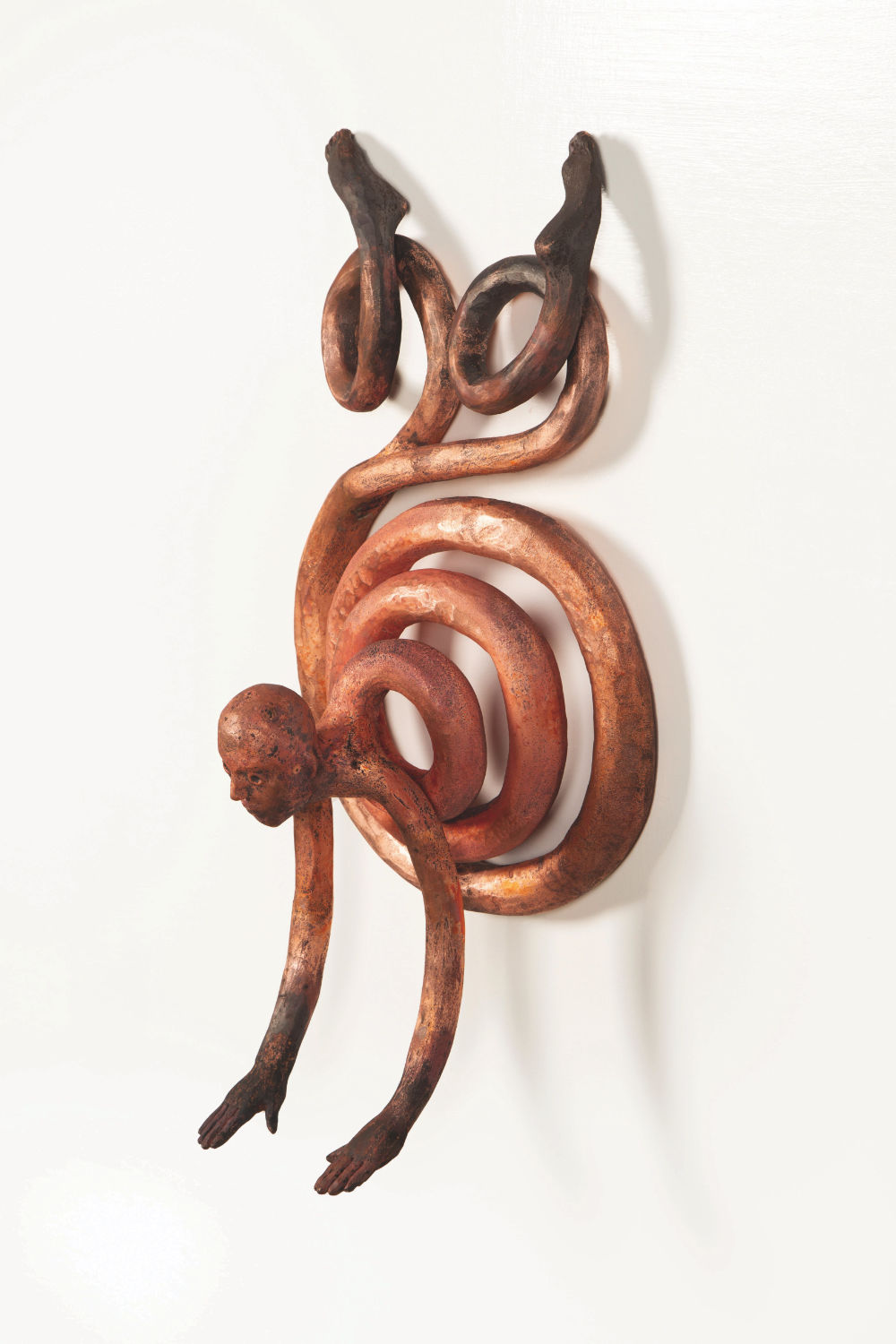A Rochester graduate student and acclaimed sculptor examines a topic that is increasingly relevant to Chinese society.
Among contemporary Chinese youth, the concept of involution, or neijuan, refers to a rolling or curling up of the insides, a reaction to the pervasive cutthroat competition that is understood as largely pointless yet seemingly inescapable. The term has gained traction in Chinese society as the nation’s economy continues to slow in the aftermath of COVID-19.

Can art capture or express the existential feeling of implosion experienced by a generation?
Interdisciplinary researcher and multimedia artist Renee Jin, a doctoral student in the Graduate Program of Visual and Cultural Studies (VCS) at the University of Rochester, decided to take on the challenge. Her exploration of the notion of involution began in 2023 and took shape with her “Involution Man” series, featuring red copper sculptures (among other work).
The sculptures went on to appear as part of her first solo show in Beijing’s Santo Hall gallery, where they were mounted last fall as part of an exhibition titled I’m rooted, but I flow—after a line from the 1931 novel The Waves by English writer Virginia Woolf. The exhibit’s artwork delves into the tension between the societal norms that bind and root people in place and the persistent tug of other cultures, forces, and desires.
Jin earned an MFA in 2022 from the prestigious Central Academy of Fine Arts (CAFA) in Beijing and decided to pursue graduate-level research programs in North America. While reading the book Visual Culture: The Study of the Visual after the Cultural Turn (MIT Press, 2006), she noted that Rochester’s interdisciplinary visual and cultural studies program was cited as the first of its kind in North America. Further investigation revealed that Zheng Bo and Walid Raad, two of her favorite artists, had trained at Rochester.
“This VCS program seemed open to practicing artists, not just art historians,” Jin says. When serving as a teaching assistant in VCS classes, she enjoys exploring both process (studio art) and theory (the power of vlogging).
Coaxing the “Involution Man” series into being involves heating, sandblasting, bending, hammering and crunching the copper to achieve its red hue and coiled form—analogous to the wrenching cultural pressure that gives rise to the concept.
“One really has to apply force to the copper, as opposed to more pliable or softer material such as wire or clay,” she says. “This gets at the idea that involution, even though it appears to be self-driven and self-determined, is forced into and onto us by the environment that surrounds us.” Meanwhile, the blank stare and slitted mouth of sculpture evokes a hollow, depleted anonymity.
“May You Live 10,000 Years” (2024)

“I am particularly interested in the portrayal of children in Chinese propaganda posters of the last century,” says Jin of the piece, which she constructed with resin, flocking, plaster, metal, wig, ready-made objects, and hand coloring. “They were always depicted with virtuous symbols or objects showing positive meaning: fruits, flowers, even spaceships.
“In this piece, a girl presents a longevity peach to an elder person. But this ritual of gift giving involves a forced reciprocity: you’re being consumed by your own gesture. Though she is offering it in a gesture of giving, the gift also retaliates or reciprocates against the giver at the same time.”
“Tearing through Red and Green” (2024)

In this piece, made of resin, metal, foam and ready-made objects, a child devours a massive watermelon, “with ceramic watermelon seeds left on his cheeks, like two streams of black tears,” Jin says. “It’s a continuation of themes in ‘May You Live 10,000 Years’: You are consuming and consumed by something at the same time.”
“The Great Look Upward” (2024)

In this artificial tree constructed of aluminum alloy, stainless steel, and plastic, each layer is made from the same replicated branch, explains Jin. “It originated from a winter run I took in Rochester. From afar, I thought the tree was full of dead leaves; but in reality, they were sparrows that suddenly flew away. That moment reminded me that human consciousness can be altered by experience.”
